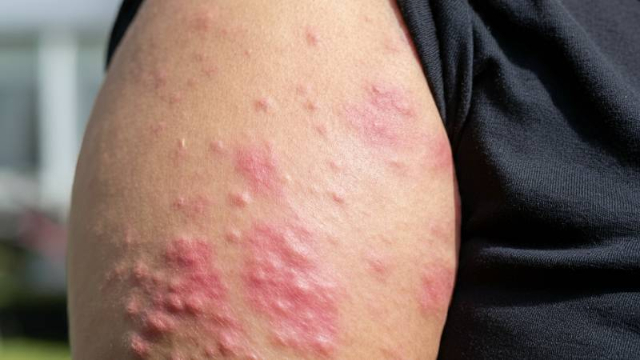If that doesn’t sound like news to you, you’re not alone. I almost let this one slip by without even a cursory, ‘Ho, hum’. But then I saw that these researchers were targeting immune system issues as a cause of childhood skin problems…
Today, there are topical and even systemic treatments for most common skin ailments of youth. I come from a time when we just called them all ‘zits’ and ‘rashes’. And the conventional wisdom was, they were caused by poor hygiene, and/or too much sugar or fat in your diet. Accutane was a thing not yet even dreamed of in our philosophy…
Back in the day…
Kids with acne, rashes or other skin ‘breakouts’ were ridiculed, criticised – even shunned. Some folks even thought the afflictions might be ‘catching’.
Some insisted that childhood skin problems, especially those appearing around the onset of puberty, were the result of too much junk food – sugar and fat, in particular. Now, we know, it’s the imbalances surging hormones and rampaging body changes can wreak on a kid that cause the most common skin issues.
Overall, childhood skin afflictions were generally considered ‘par for the course’, and parents gen-erally told kids to just ‘tough it out’. That the zits would go away on their own as they grew up. “This, too, shall pass…”
New revelations
Folks didn’t differentiate much, back in the day, between routine skin issues such as pimples and blackheads, and more serious conditions such as eczema, psoriasis and alopecia. New science has revealed that there’s a fundamental difference in how those two ‘classes’ of disorders come about.
Researchers at Seoul National University (South Korea) wanted to explore the connection, if any, between immune system deficiency and the second type of skin conditions. Afflictions such as eczema, psoriasis and alopecia are known to be associated with immune system weakness in later life.
What they did
A team directed by Co-lead Investigator Dr. Hyunsun Park wanted to get the widest possible view of the issue. So they analysed health records of 2,161,900 Korean children who were followed from 2009 to 2020. And they discovered distinct associations between the development of immune-mediated skin diseases (IMSDs) and childhood obesity and early-life weight swings.
“We think that various factors, including diet, obesity, or other lifestyles can affect gut environment and contribute to the development of IMSDs,” Part explained. “We are trying to find the puzzle pieces to demonstrate how they are connected.”
“Our goal was to see how a child’s weight and changes in their weight are related to the development of alopecia areata, atopic dermatitis, and psoriasis,” Park specified
What they found
According to an abstract of the study report, the analysis revealed children who were obese were more likely to develop common IMSDs compared to children with a normal weight. Among the three most common IMSDs, eczema demonstrated the most obvious trend.
Children who gained weight (normal to overweight) had a higher risk than children who maintained their normal weight. Children who lost weight (overweight to normal) had a lower risk of developing eczema than children who maintained their overweight.
The takeaway
“Our findings support the importance of promoting weight maintenance among children who are already within the normal weight range because it may help reduce the risk of developing atopic dermatitis. […] Implementing purposeful interventions, including nutritional strategies, to decrease body weight may aid in reducing the risk of developing IMSDs in children.”
My take
I was surprised by the study’s findings. But my poetic, romantic soul was tantalized by the ironic way that the whole investigation came full-circle. We started out, decades ago, ‘tarring all childhood skin disorders with the same brush’. We blamed them on junk food and an unbalanced diet. Then we segued to hormones as the cause. Which did help explain the dreaded zits.
Now, science has come back to diet as a leading factor in the development of childhood IMSDs – via the obesity vector.
This is just another reason to put greater emphasis on what we feed our kids. And the importance of knowing what they choose to eat when their parents aren’t around…
~ Maggie J.


